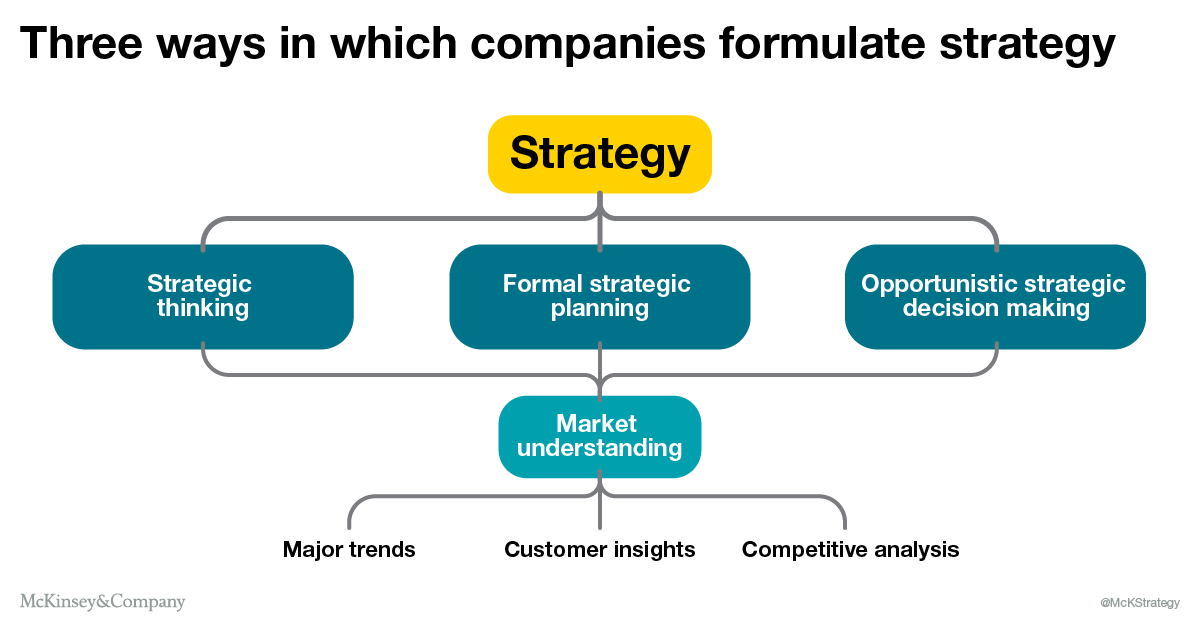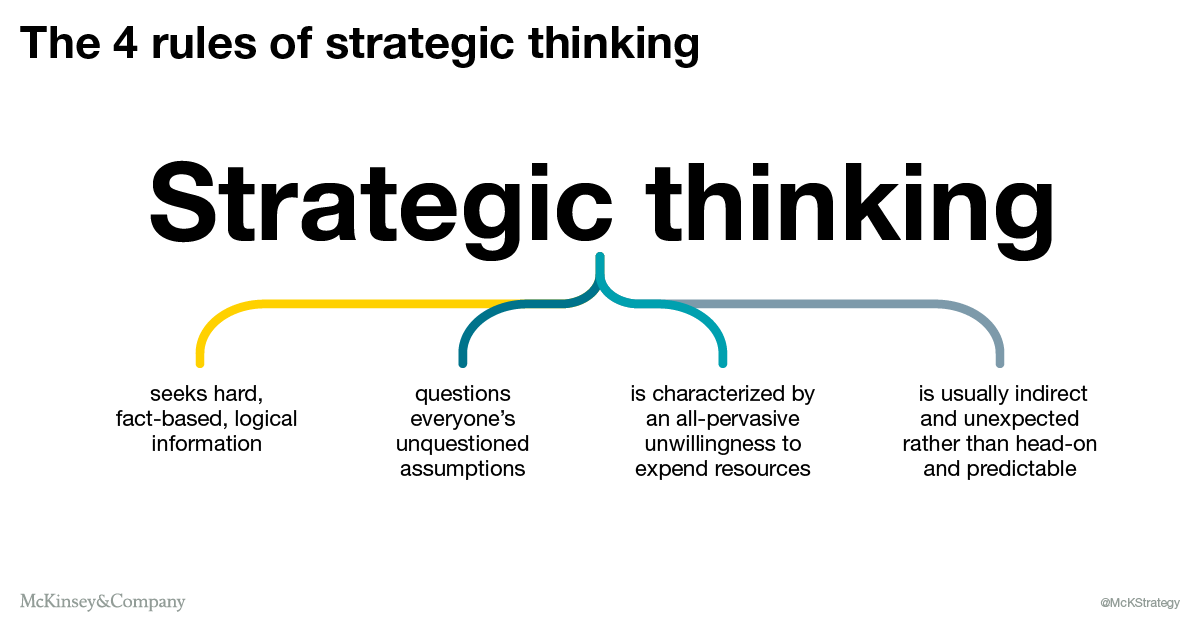A few days ago, Jeff Bezos published his letter to shareholders. He details what he sees Amazon and other companies as needing to do to remain in what he calls “day 1” mode. By examining the flaws he sees in “day 2” companies, it can be inferred that “day 1” companies remain relevant and are able to adapt to change.
He suggests four essentials: Customer obsession, a skeptical view of proxies, the eager adoption of external trends, and high-velocity decision-making.
It’s a compelling read, but I would like to push this further. The way I read it, Bezos encourages others (and certainly his team) to individually and institutionally apply strategic thinking that focuses on how to uniquely deliver more value to your customers and in doing so, embrace external trends with a strong bias toward action and a desire to avoid getting weighed down by processes.
In a nutshell, this inspires a provocative question: Can large companies be successful with less process and more delegated strategic thinking?
It wasn’t until the late 1970s, more than 50 years after McKinsey started to consult to companies to help them improve performance, that the firm established a functional practice focusing on strategy. In launching the new practice, its new leaders undertook ambitious research to study how leading companies develop their strategy. In a fascinating paper by a previous generation of McKinsey members published in 1978, long before Amazon existed, we suggested such an approach can be highly effective – i.e. driving creative strategic thinking without a comprehensive top-down planning regime (which has been adopted by most companies ever since).
[pull quote It’s rare and refreshing to see companies of significant size unleashing and harnessing the full scope of their talent to think strategically]
To underscore how companies, and not only Amazon, can be successful that way, I’d like to slightly simplify, adapt and focus on a few of these findings, which were republished in an article in the year 2000, “Think Strategically.”
Interestingly, formal strategic planning wasn’t so common in the 1970s. The authors noted that many companies have enjoyed considerable success without advancing beyond the rudimentary levels of strategic development. Annual budgeting was the dominant and often the only formal planning process.
The point wasn’t that most companies didn’t have a strategy. Rather, the quality of the strategy of a company without a formal process depended largely on the vigour of its CEO and other top executives. Do they have a good feel for the competition? Do they know their own cost structures? If the answer to such questions was yes, then perhaps there was no advantage to formal strategic planning.
In reality, the authors noted, when companies start to manage a more complex portfolio of activities (e.g. multi-business), the informal approach is unlikely to work at a corporate level.

Digging deeper, they discovered that successful companies managed to carefully and thoroughly link strategic and operational decision making absent the process but with the prevalence of five management attributes:
- A well-understood conceptual framework that sorts out the interrelated types of strategic issues. The framework is defined by tomorrow’s strategic issues rather than by today’s organizational structure. Top management supervises the process and decides the issues it must address and which should be assigned to operating managers.
- Strategic-thinking capabilities that are widespread throughout the company, not limited to the top echelons.
- A process for negotiating trade-offs among competing objectives that involves a comparison of initiatives against each other to ensure scarce resources go where they can create the best returns.
- A performance-review system that focuses the attention of top managers on key problem and opportunity areas without forcing those managers to struggle through an in-depth review of each business unit’s strategy every year.
- A motivational system and management values that reward and promote the exercise of strategic thinking.
The authors said that fostering and rewarding widespread strategic thinking does not mean that every manager is expected to become a brilliant strategic thinker.
They proposed four rules to what strategic thinking should be (the bold part is unedited as written nearly 40 years ago):

Strategic thinking seeks hard, fact-based, logical information.
Strategists should be uncomfortable with vague concepts like “soft synergy.” They should not accept generalized theories of economic behaviour, and they should try to understand the underlying specific dynamics relevant for their business in an unbiased way.
Strategic thinking questions everyone’s unquestioned assumptions.
Where competitors may see constraints, creative strategic thinkers will seek opportunities. Consider how Wal-Mart or Southwest first found business opportunities where their competitors thought the opportunities weren’t viable.
Strategic thinking is characterized by an all-pervasive unwillingness to expend resources.
A strategist is always looking for opportunities to win at low or no cost.
Strategic thinking is usually indirect and unexpected rather than head-on and predictable.
The authors cite what is often seen as the origins of strategy to illustrate this point with a quote from Basil Henry Liddell Hart about military strategy: “In strategy, the longest way around is often the shortest way home.”
No large company can completely avoid bureaucracy or fully trust its middle management to think strategically all or even most of the time. Yet it’s rare and refreshing to see companies of significant size boldly pursue a recipe that was once more common – unleashing and harnessing the full scope of their talent to think strategically, on “day 1” and ideally every day of the week.
Yuval Atsmon is a senior partner in McKinsey’s London office.
